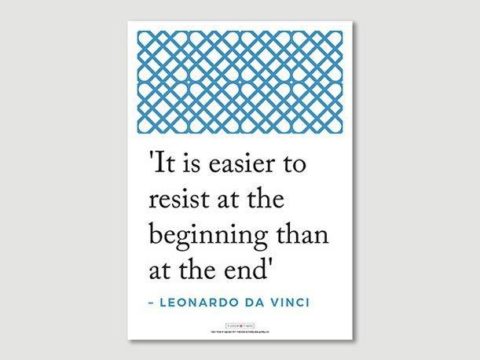Francis Walsingham: Life Story
Chapter 1: A Protestant Education
Francis’ father, William Walsingham, was a leading London lawyer during the reign of Henry VIII. He had court connections and was employed by the king in the dismantling of the estates of Cardinal Wolsey, after the latter’s fall in 1529. Soon after this, William’s wife, Joyce, gave birth to their first son, Francis, probably at the family estate of Foot’s Cray, in Kent, which William had purchased in the late 1520s.
Francis’ paternal uncle, Sir Edmund Walsingham, was Lieutenant of the Tower, and his maternal uncle was Sir Anthony Denny, one of Henry VIII’s most trusted gentleman of the Privy Chamber. Anthony Denny was a Reformer, who continued in high favour during the reign of Edward VI.
Francis was born around the time that the English church was declared to be under the Supreme Headship, not of the pope, but of the king. Whilst doctrine did not change during the remaining years of Henry VIII’s reign, during Francis’ childhood, many of the old traditions of the Catholic church were dismantled – he may have seen or heard the destruction of the Holy Rood from nearby Boxley Abbey, denounced in Maidstone market place as a sham, or the breaking up of the tomb of St Thomas Becket of Canterbury, once the greatest pilgrim centre in England, not far from the Walsinghams’ estate.
William Walsingham died when his son was around three years old. As was customary, Joyce, with five daughters as well as Francis to care for, remarried swiftly. This match took Francis even closer to the orbit of the royal family. His new stepfather, John Carey, was brother-in-law to Mary Boleyn, once the mistress of Henry VIII, and sister to the new queen, Anne Boleyn.
John Carey was bailiff at Hunsdon, one of the royal palaces, where the king’s children, Mary, Elizabeth and Edward were often housed during the 1530s and 1540s, the princesses in various degrees of disgrace or favour, the young prince the apple of his father’s eye. The Dennys and the Careys were Reformers, so it is likely that Francis was brought up as an evangelical – pure Protestantism was not permitted in England during Henry VIII’s reign.
Whilst it is unknown whether Francis knew Elizabeth during their respective childhoods, his later strong personal relationship with Robert Dudley, later Earl of Leicester, who was amongst the boys surrounding the young prince suggests that he mingled with Edward’s friends.
Francis’ early education would have been at home, before he entered King’s College, Cambridge in 1548. Whilst King’s was not the centre of Protestantism that St John’s College was, Cambridge generally was open to the new faith, and the ordinances that were promulgated for the university in the 1540s emphasised the duty of the Fellows and students to fight against the Pope.
Fortunately, the iconoclasm that erupted during the reign of Edward VI did not damage the superb King’s College Chapel and Francis would have worshipped in one of the most beautiful of all late mediaeval English chapels, its decoration a riot of Tudor symbolism – although it is questionable whether he would have appreciated it. His religion, probably already leaning toward the evangelical, was strongly Puritan in later life, eschewing the outward symbols of religion that the Godly, as they called themselves, saw as idolatrous.
During Francis’ period at King’s College, John Cheke became its Provost. Cheke, well-known for his new interpretation of Greek pronunciation, was also tutor to King Edward VI, who succeeded Henry VIII in 1547. In 1549 Cheke became Lady Margaret Professor of Divinity at Cambridge, and also conducted a College visitation, to ensure that the new Book of Common Prayer, instituted that year, was being followed. This Book of Common Prayer was the first significant move in England away from Catholic doctrine, although, compared with the 1552 Book of Common Prayer, it was still conservative in tone. We can infer that Walsingham was strongly influenced by Cheke’s management of the College, and also by the other great Reformer based at Cambridge during Edward VI’s reign – Martin Bucer. Bucer spent much of his life attempting to bring the different Reformers together, and mediating the differences between Luther, Zwingli and Calvin, to create a united opposition to Catholicism. This concept of the unity of Protestantism resonated with Walsingham, who would later promote the idea of an international brotherhood of co-religionists.
Francis left Cambridge around the end of 1550, leaving without taking his degree, as was usual for those who did not wish to join the church. It is unknown where he spent the next two years, although it is possible he travelled abroad. He was known later for his linguistic facility – he mastered Latin, French and Italian, and his skill in the latter languages may have been honed in these years.
In 1552, Francis entered Gray’s Inn. London was a hotbed of religious radicalism – preachers on every corner denounced the idolatry of the old faith, and exhorted sinners to repent and seek salvation through faith alone. European religious refugees founded Stranger churches, where even more radical brands of Protestantism were preached, particularly Jean Calvin’s doctrine on predestination, and the Catholic belief that the bread and wine at the heart of the Eucharist literally became the Body and Blood of Christ was rejected.



